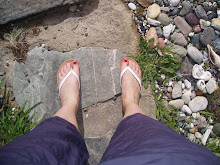The author contradicts themself in the ambiguous description of "sometoemotional release... again here we only deal with physical unwinding". By simply reading the term sometoemotional release we assume that a large portion of this will involve emotional and somatic releases, therefore we are not purely dealing with physical unwinding (which cannot be seperated from emotional or somatic phenomena, as they are all interconnected in the field of myofascial unwinding) but an infusion of all three. This would suggest that again the writer of this article has only investigated the topic from a limited set of viewpoints and has yet to see the whole picture. If they are however attempting to insinuate that pure physical unwinding has purely somatic and emotional effects they are still not linking the three bodies which are essentially part of this holistic field, and the ambiguous nature of the statement leaves the reader confused.
In the article 'Unravelling the Mysteries of Fascial Unwinding' the researchers have compiled a very relevant list of specialised articles related to myofascial release and the ideomotor effect (in which the subject makes movements unconsciously facilitating said release). Neuromuscular therapy, craniosacral therapy and bodywork journals boost the quality of reference sources, an article in the new scientist appears from the heading to be representing a skeptics point of view regarding the phenomenon of fascial unwinding: 'Greatest Myth of All'. However on close inspection of the article in question, we discover that it relates in fact to the unconscious processes of the brain related to perception and action. Again, the ambiguity of the reference heading may reflect an ambiguity in the article itself, reflecting an ongoing theme of ambiguity projected by the author.
The 'Healing ancient wounds: the renegades system' article is one of the main articles seeming to suggest that fascial unwinding and indeed tense fascia may have a psychological, subconscious and even spiritual connection, transcending original science based theory and simultaneously linking with it. There are also extensive references to neurobiology, the medical side of fascial unwinding and ideomotor reflexes, lending a scientifically proven base to these findings.
Overall, the writer seems to have attempted to isolate and detach the phenomenon of fascial unwinding as a seperate event in order to portray it in a conventionally scientific format, unfortunately this has not worked in his favour due to the inherently holistic nature of fascial unwinding. He has utilised many quality reference sources, namely peer reviewed journals, but his downfall lies in his communication of these findings in what should have been an academically rigorous manner.
References:
Halligan, P. & Oakley, D. (2000) Greatest Myth of All. New Scientist 168 (2265), 35 - 39.
My own thoughts.
Terra Rosa Bodywork E-News. (2008) Unravelling the Mysteries of Fascial Unwinding. Retrieved on the 26th April 2009, from: http://74.125.95.132/custom?q=cache:5ptBtbTPEsoJ:www.terrarosa.com.au/articles/Terra_News2a.pdf+unraveling+the+mysteries+of+unwinding&cd=1&hl=en&ct=clnk
